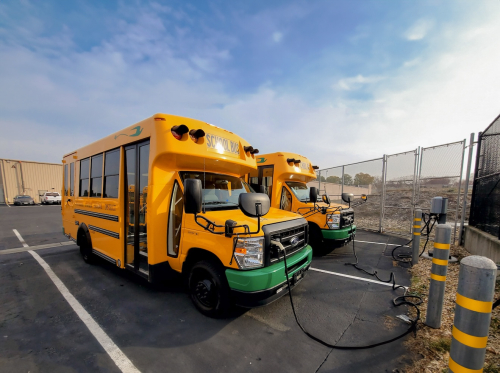The project will use replicable, open standards throughout the vehicles, hardware, and software. The Mobility House has assembled a team of partners including World Resources Institute, Center for Transportation and the Environment, and Polara Energy USA to support Pittsburg Unified School District, Fremont Unified School District, and the Napa Unified School District.

School buses charging at the Pittsburg Unified School District bus depot. Photo provided by Pittsburg USD.
Our interest is to establish real-world examples of V2G projects that other districts can easily replicate. Through this project, we aim to reduce congestion on the same circuits by reducing the need for imported power, thus benefitting three school districts, the State of California, and grid reliability.
—Greg Hintler, CEO of North America at The Mobility House
The project will be among the first Vehicle-to-Grid (V2G) connected systems installed in PG&E territory. Three of the schools will export power from their buses during peak windows in the summer, earning the districts $2 per kWh through the Emergency Load Reduction Program (ELRP), and helping keep the distribution system of their communities from overloading. One school will use bidirectional functionality for V2B resilience, to act as a community resilience hub at their high school.
All project learnings will be captured in a Blueprint report, providing guidance for districts across the state on how to incorporate V2G into their school bus charging operations. This project will not only provide financial benefits but also improve grid reliability, reduce greenhouse gas emissions, and support disadvantaged communities in times of grid interruption.